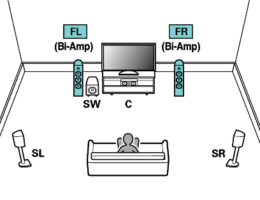With all the technology at our disposal, learning and knowing how to edit music is no longer a complicated task. While analog audio editing is still being used nowadays, the processes involved are often tedious and may, at times, even lead to sound degradation.
Editing music tracks is a task which demands precision and accuracy; doing it using audio editing software will save you a lot of time and will spare you from the headaches of doing it the old-school way. In fact, a computer is no longer necessary for some editing tasks. You can even edit music and video with apps on your Iphone or Android! Much like the new age of video editing, You no longer need to cut a piece of analog tape physically in order to make edits to a song! Luckily, we are living in the age of digital files where sound quality remains intact and where audio tracks of every conceivable format can be edited and produced.
What Is Music Editing?
Music editing is a type of sound editing which involves the process of compiling, editing, and syncing music for film, video, or games. An audio editor or music editor is responsible for producing a soundtrack.
Editing music is a means to manipulate music to meet your objectives. You can shorten, delete, cut, copy, mix, and paste parts of a music piece as you would for a novel or a film.
What Is Music Editing Software?
Music editing software typically has the following characteristics:
- The ability to import and export audio files in different formats
- The ability to record audio and store recordings in digital format
- The ability to edit starting and stopping points
- The ability to fade into or out of a clip or between clips
- The ability to mix or combine multiple sound sources or tracks
- The ability to apply simple or advanced audio effects
- The ability to play back sound that can be sent to one or more outputs
- The ability to convert to different audio file formats or between different levels of sound quality
With all these qualities, imagine the possibilities one can have when using music editing software.
Can You Edit Music Yourself?
Music editing seems like a job that can only be done by pros. However, because software and hardware for music editing have become readily available and easily accessible to regular people, it is now possible to edit music on your own.
The fun part of having editing software is that you no longer need complicated and clunky sound equipment nor the professional expertise in order to know how to edit music. Your trusty laptop or desktop can do the job just as effectively.
If you’re interested in learning the ropes on how to edit music, then read on. By acquiring the skills in music editing, you open yourself up to numerous possibilities to tackle both personal and professional projects or use your knowledge to modify songs for your own personal listening pleasure. Learning how to edit music is also a good exercise in careful listening.
Steps on How to Edit Music
Depending on your objectives, the steps on how to edit music can range from doing a simple modification for starting and stopping points for a song you like or cutting or trimming the beginning or end part of a song to fulfilling more professional tasks like noise reduction or adding audio effects.
We’ve selected some of the most commonly used music editing software and have classified them below for easier reference. Each software comes with a set of steps to guide you through the process.
How to Edit Songs in iTunes
You probably never thought of iTunes as a song editing application, but it does have some basic features which will enable you to exercise some control over a song you want to edit.
1. Starting and Stopping Points
To begin, select a song then go to “File” and select “Get Info.” A dialog box will pop up on your screen. Select “Options” where you will find the start and stop fields. Set your preferred start and stop times in the fields. Make sure that you know the exact start and stop time points before filling in the field. To do this, play the song and refer to the status pane to see the elapsed time. Drag the slider to move quickly through the song and find out what exact times you want the song to start and end.
2. Splitting a Single Track Into Multiple Tracks
To be able to do this, you will need to set your importing preferences to AIFF first before importing a sound file. AIFF is a format that gives you the full quality and uncompressed version of a track or sound file, which you will need in order to convert later on.
Choose iTunes on your taskbar, then click on “Preferences.” A dialog box will pop up on your screen. Click on “Import Settings” at the bottom and set it to “AIFF Encoder.” After changing your import settings to AIFF, you may now rip a CD track or import an AIFF sound file into your iTunes.
After importing the track or song file as an AIFF, label it so you can identify it easily. Next, you need to change your import settings to AAC or MP3. Do the same steps as you did previously to change this setting. You are now ready to convert the song segments from the AIFF track you imported.
Select the song then go to “File” and click on “Get Info.” When you get to the dialog box showing the song information, click on “Options” again to set the start and stop times. Define the start and stop times for the first song you are going to segment from the long AIFF track you previously imported.
After you’re done defining the start and stop times for the first song, you can now convert that segment from an AIFF to an AAC or MP3 file. To do this, select the original AIFF track then go to “Preferences,” click on “Advanced” then “Convert Selection” to either an AAC or an MP3, depending on your preference. iTunes will only convert the section of the song with the start and stop times that you defined and will create a new song track in AAC or MP3 format.
After the first song has been converted, rename it using the actual song name. Repeat this process for each song segment that you want to save from the original AIFF file. Once you’ve separated all the songs, you need from the original AIFF file, delete that song file from iTunes.
How to Edit Music Using Music Editor Free
Music Editor Free is a professional-grade software that’s intuitive and relatively easy to use. It has classic editing functions such as cutting, copying, pasting, paste mixing, trimming, cropping, deleting and other basic tools necessary for editing music files. Additional features, such as noise reduction, amplification, and adding audio effects can also be found in this nifty editing software.
Here’s a step-by-step guide on how to edit music and add audio effects using Music Editor Free.
1. After launching Music Editor Free on your computer, click “Open” to select and add an audio file to your waveform window.
2. Select the region you want to edit by clicking and dragging within the waveform editing area with your mouse. Don’t release the left mouse button up until you’re finished making the selection.
3. To edit music, click on the “Edit” tab. Use the tools under the tab as needed: Cut, Copy, Paste, Paste Mix, Crop, etc.
4. To add audio effects: First, select the region you want to add audio effects on. Then, click on the “Effect” tab and select from among the features and tools as needed: fade in, fade out, amplify, vibrato, echo, chorus, etc.
5. Adjust the output quality by identifying parameters in detail or by using presets. You can delay time, adjust the mix depth or feedback gain or use some other preset functions. Before adding the effects to the waveform, make sure to do a “preview” and listen to the adjustments that you’ve made to ensure that you’re getting the effects that you want.
6. To save the changes you made, click the “Home” tab then hit “Save,” (if you want to apply the changes you made to the source file) “Save File As,” (if you want to save the edited track using a different file name and/or location) or “Save Selection As” (if you want to just save the selection you highlighted with a new file name).
How to Edit Music Using Wavepad
Wavepad is a free audio editing program that is downloadable for both Microsoft Windows and Mac operating systems. The free version is for non-commercial use only, but does not expire.
Wavepad has a user-friendly interface and allows you to record and edit voice, music, and other audio recordings. Just like Music Editor Free, Wavepad is also professional-grade and contains a bevy of tools, features, and effects such as amplification, noise reduction, and echo. More advanced tools include text-to-speech synthesis, spectral analysis, and voice changing. You’ll be glad to know that Wavepad works directly with the MixPad Multi-Track Audio Mixer — a multi-track recording and mixing software.
Wavepad supports multiple audio formats (e.g. wav, mp3, real audio, aif, ogg, flac, vox, gsm, au, etc.) as well as sample rates from 6 to 192kHZ, mono or stereo, and 8, 16,24, or 32 bits. The software is also capable of doing batch processing; you can apply effects or convert thousands of files using a single function. Additionally, it can edit audio from video files, create bookmarks and regions for easier reference and assembly of segments for lengthy audio files, as well as restore audio using noise reduction and click pop removal.
Before editing music, make sure that Wavepad is installed properly on your computer.
1. To cut or trim the beginning, end, or a part of a song, you can either use your mouse or the keyboard.
If you’re using a mouse, select or highlight the parts of the audio that you want to delete then press the delete key. Once you’re satisfied with the changes you made, you can either save the file as the source file or save it using a different file name.
If you’re using a keyboard, play the song up to the part where you want to start deleting then hold down the Shift key while pressing the Home key or End key so as to highlight the part that you want to delete. When you’re done highlighting the part that needs to be deleted, press the delete key. If you’re satisfied with the changes, save the file as a source file or save it using a different file name.
2. To copy a section of a song or audio file, highlight the part of the song that you want to copy using the mouse. Once you’ve selected the portion you want to be copied, click “Copy” on the home tab. Then, open a new audio file by clicking on “New” on the Home tab. Paste the portion that you copied on the new audio file by clicking on “Paste” on the Home tab. You can now save the new audio file you created.
3. To make simultaneous edits to multiple audio files, use the Batch Converter. Select “Batch Converter” on the Tools tab. A dialog box will appear on your screen. Click the “Add File” button and select the files or if you have all the files in one folder, click “Add Folder.” After you’ve selected all the files for the batch, click “Next.” The next step is to select the action you want to be applied to the whole batch then click “Add.” When you have chosen all the audio settings you want adjusted, click “Next.” Select the output that you want for the files as well as the location you want them placed, then click “Finish.”
Conclusion
Once you get the hang of it, editing music using computer software will become easy and effortless. You can also try experimenting with other music editing software that we did not mention here. Generally, every music editing software has the same basic and common functions.
To summarize, here are the basic steps you need to remember when editing music:
1. Import the song file using your editing software of choice.
2. Save the song file on your computer. (Note the file formats required by the software you’re using.)
3. Familiarize yourself with the viewing pane or waveform of your preferred software, so you’ll know the starting and stopping points, how to highlight parts of the audio, etc.
4. Highlight the parts of the song you want to edit out or delete, then press the delete key.
5. Use the cut or copy and paste tools when you want to create a new file using the part which you copy-pasted.
6. Highlight the part of the song you want to be adjusted, then use the audio tools where you want to make adjustments in terms of output or volume.
7. When you’re done doing the necessary changes and edits, save your work. We recommend to always save your work as a new file instead of saving the changes you made to the source file. This way, you will still have access to the original file in case you want to do a re-edit at some point.
8. Experiment with audio effects so you’ll gain a better understanding of concepts such as amplifying, normalizing, echo, reverb, etc.
Music editing may sound intimidating at first, but it’s really not as complicated as it seems. The development of music editing software has made the task a lot easier, even for amateurs! The tools and features are designed in such a way that it’s easy to familiarize yourself with their functions. Deleting, copying, cutting, and pasting are already universal concepts we use in other software we are already proficient with (like Microsoft Word).
The next time you use iTunes, dabble with the features and tools we’ve elaborated on and have a little fun with them. Start a personal project, perhaps your own cuts and splices to a song that you want to use in a family or music video. You might end up not just gaining a new skill but a new calling, too!




